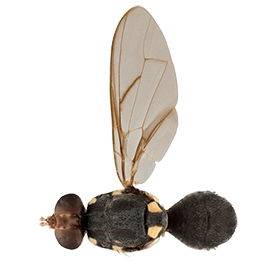Diagnosis
Morphological – adult
Features include;
- a dark coloured species
- face black
- postpronotal lobes and notopleura yellow
- mesopleural stripe reaching midway between anterior margin of notoplural callus and anterior npl. bristle, scutum black
- lateral potsutural vittae short and tapering posteriorly
- medial postsutural vitta absent
- scutellum yellow with a broad medial longitudinal black band
- wing with a narrow fuscous costal band and anal streak, r-m crossvein oblique and enclosed by a pale infuscation, cells bc and c colourless with microtrichia in outer corner of cell c only all abdominal terga entirely black.
Morphological – larvae
No information available.
Molecular
DNA barcoding
BOLD reference data not available.
PCR-RFLP Test 1
BsrI: Data not available
HinfI: Data not available
HhaI: Data not available
Sau3AI: Data not available
SnaBI: Data not available
SspI: Data not available
Vspl: Data not available
PCR-RFLP Test 2
Data not available.
Gallery
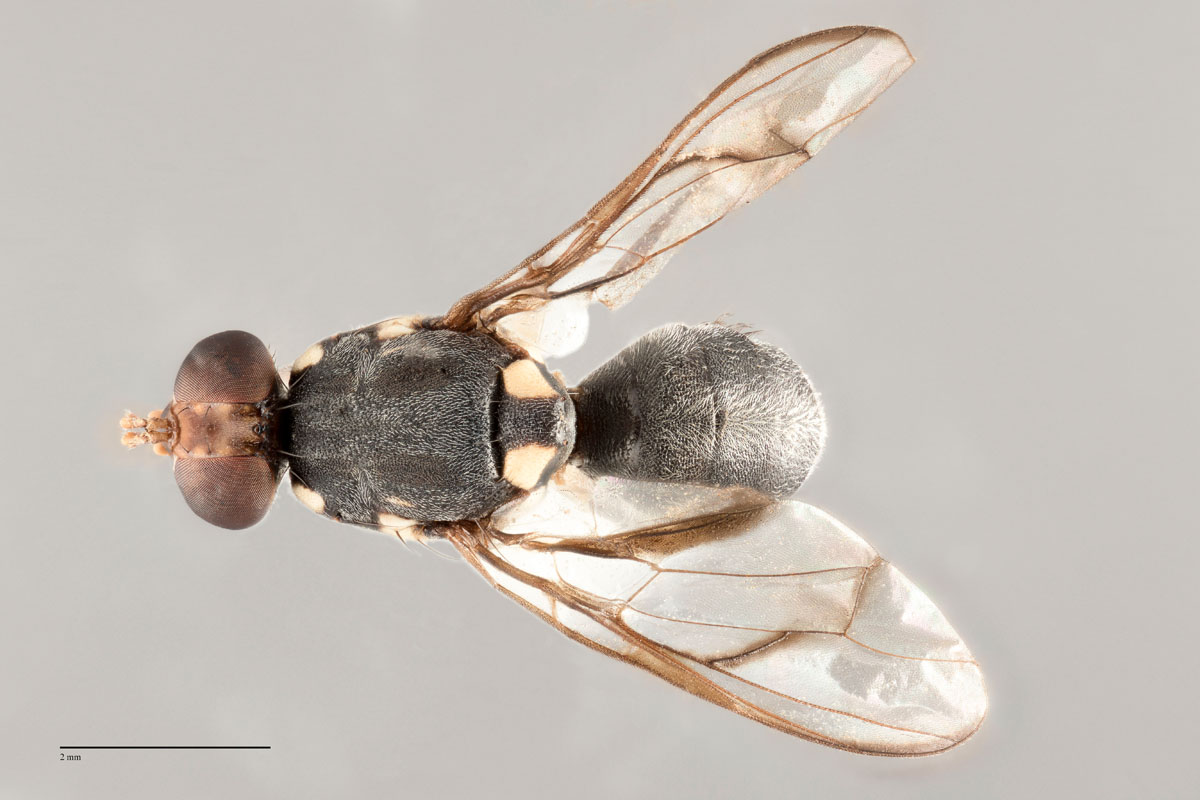 link
linkBactrocera obliqua - Entire Fly Dorsal OBL001
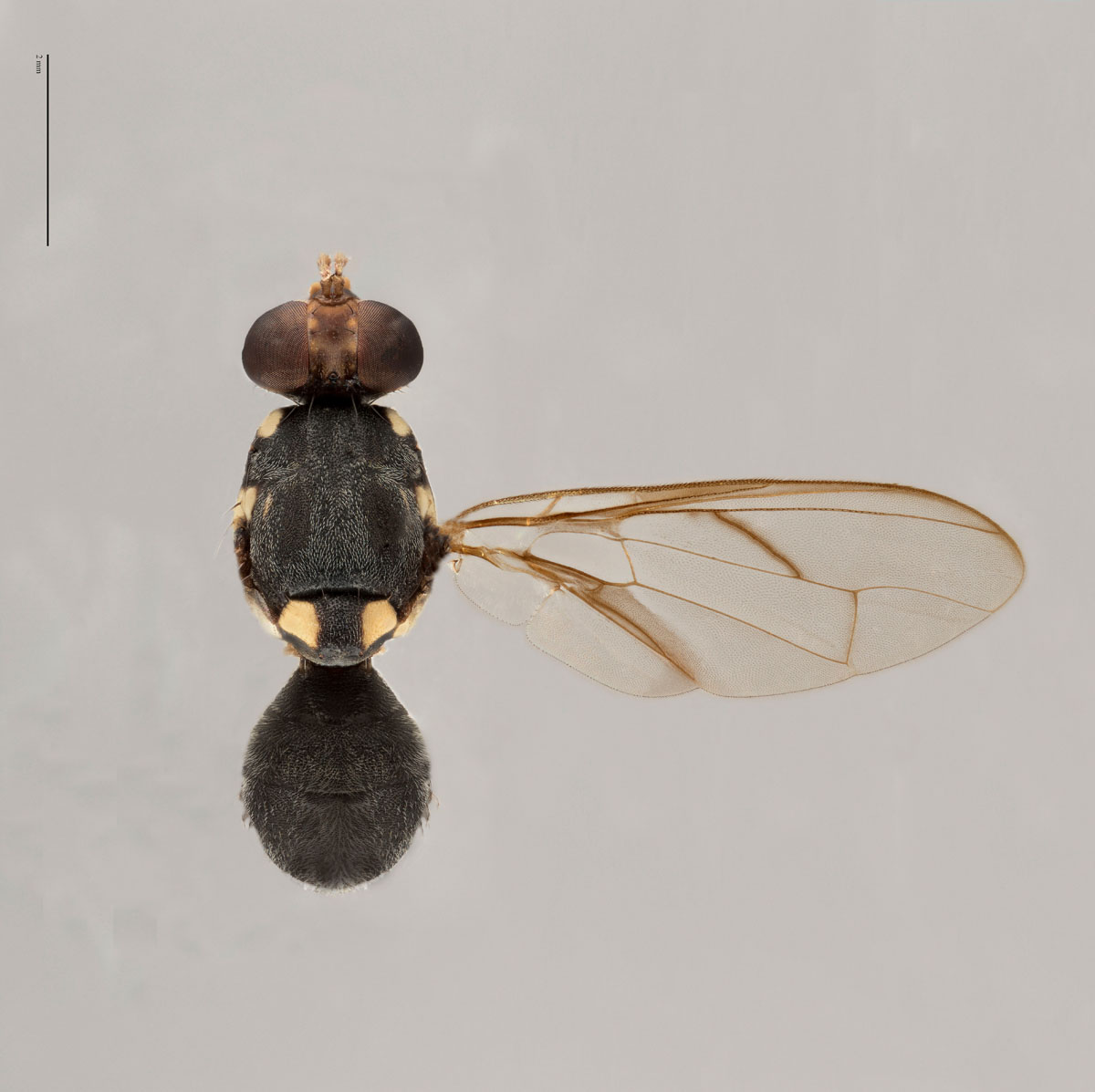 link
linkBactrocera obliqua - Entire Fly Dorsal with Wing OBL001
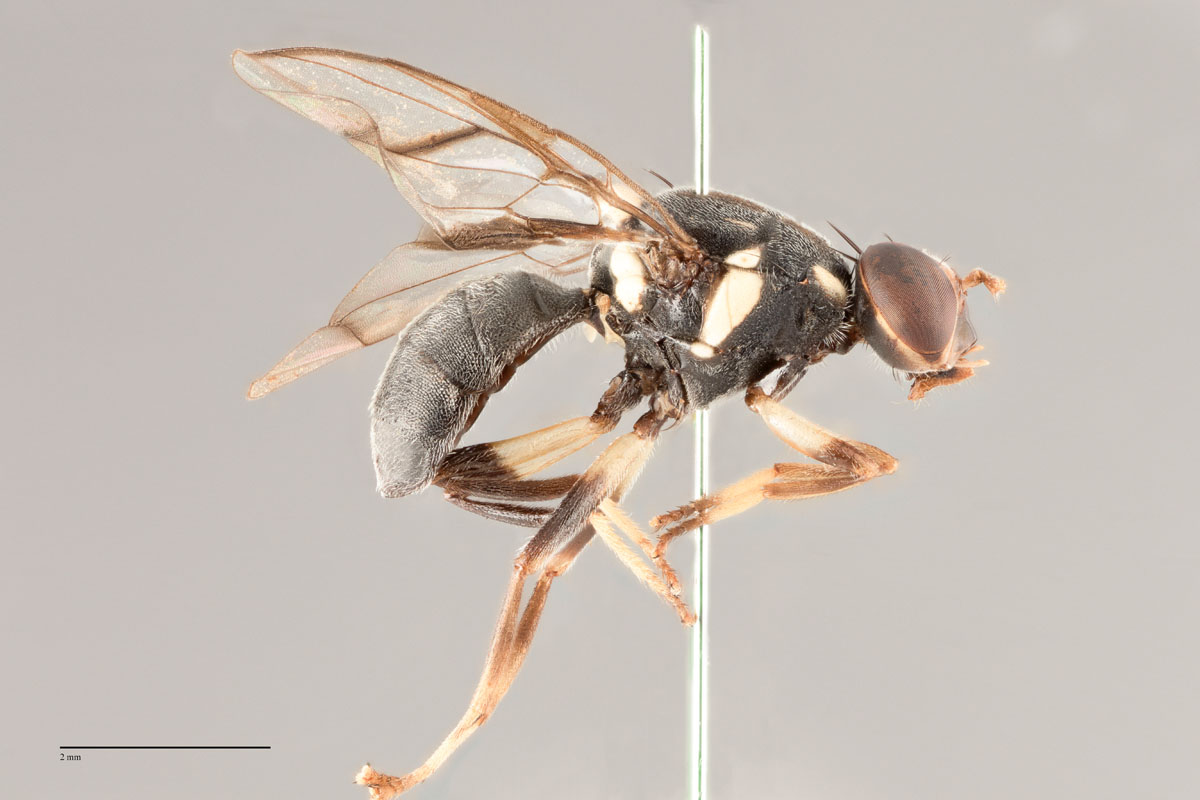 link
linkBactrocera obliqua - Entire Fly Lateral OBL001
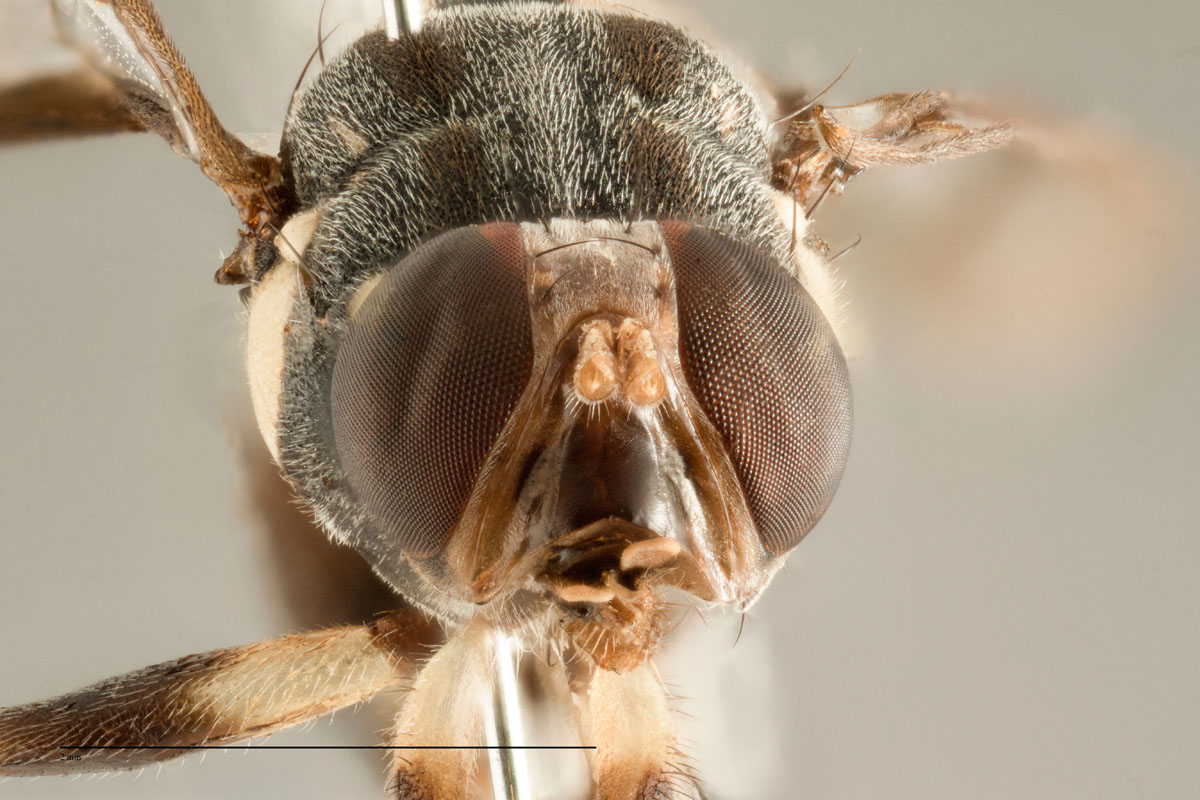 link
linkBactrocera obliqua - Head OBL001
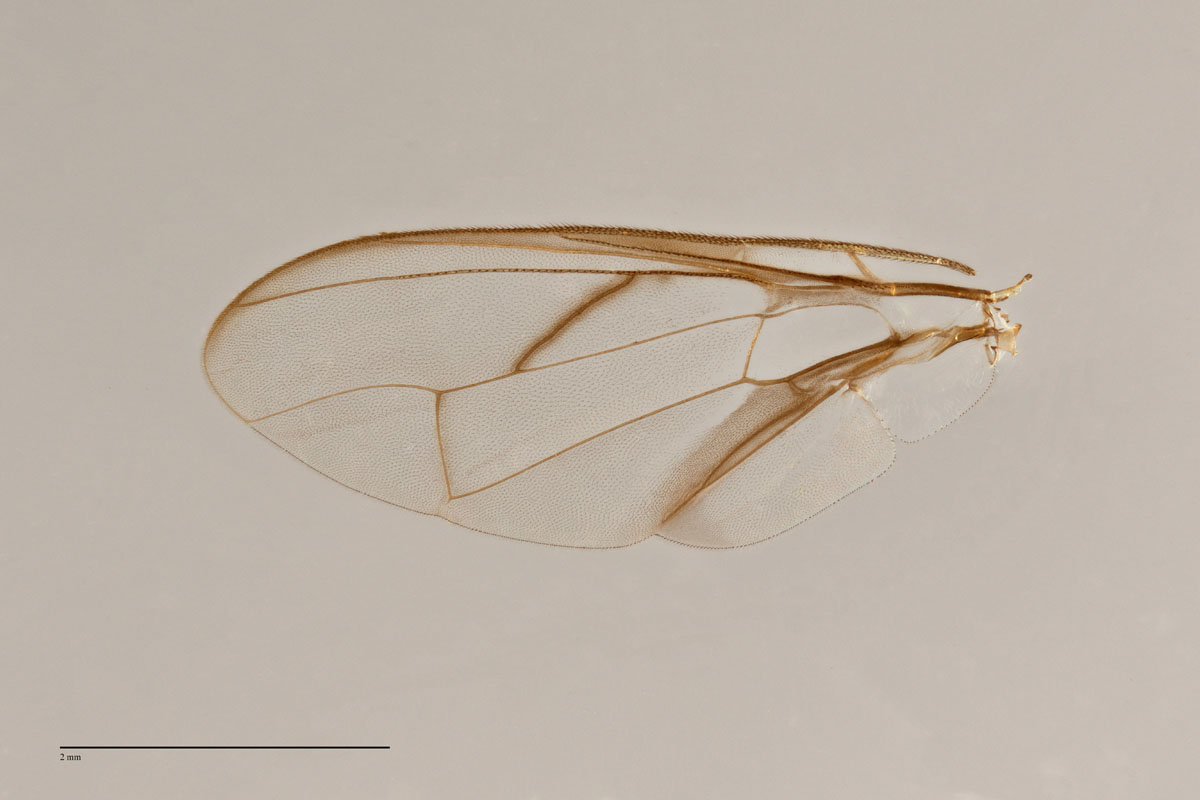 link
linkBactrocera obliqua - Left Wing OBL001
Host Range
Polyphagous. Recorded on six hosts from three families including Myrtaceae. Edible hosts include guava and edible Syzygium (water apple, Malay apple).
Distribution
Bismarck Archipelago of Papua New Guinea; Bougainville Island.
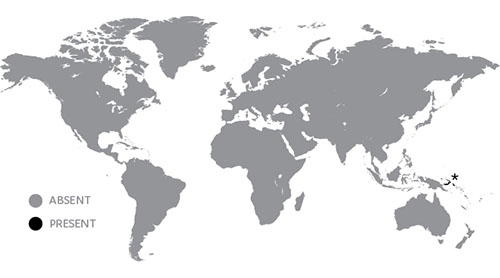
Similar species
B. obliqua is similar to B. psidii (Froggatt) in possessing a broad black triangular marking on dorsal surface of scutellum, infuscation on crossveins and mesonotum black with medial postsutural vitta absent but differs in having a black face, r-m crossvein longer than dm-cu crossvein, lateral postsutural vittae very short and narrow ending just behind sa. setae, legs with all tibiae and apices of femora and apical 4 segments of tarsi fuscous.
Pest Status
- Exotic
- A minor pest of Myrtaceae (guava, Syzygium)
Attractant/Lure
Weakly attracted to isoeugenol (Royer et al. 2017).
